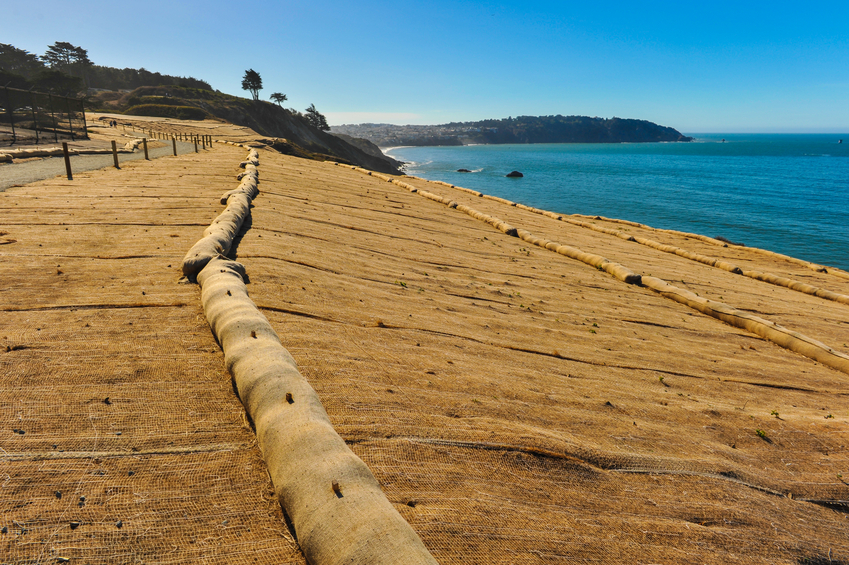Iowa Civil 10 PDH Discount Package 1
Courses in this Package
Building Terrorism Mitigation - Site Layout and Design (F05-002)
Construction Site Storm Water - Good Housekeeping (C02-003)
Strength Design For Reinforced Concrete Hydraulic Structures (S03-022)

This online engineering PDH course discusses site-level considerations for development. The intent of this guidance is to provide concepts for integrating land use planning, landscape architecture (vegetation, landforms, and water), site planning, and other strategies to mitigate the design basis threats as identified via the risk assessment.
Integrating security requirements into a larger, more comprehensive approach necessitates achieving a balance among many objectives such as reducing risk; facilitating proper building function; aesthetics and matching architecture; hardening of physical structures beyond required building codes and standards; and maximizing use of non-structural systems.
This 5 PDH online course is applicable to engineers, planners, architects, landscape designers, construction and operations personnel, security and law enforcement agents, as well as consultants and contractors to gain a better understanding in identifying and implementing crucial asset protection measures when planning and designing the site against potential terrorist attacks.
This PE continuing education course is intended to provide you with the following specific knowledge and skills:
- Planning the use of land
- Selection the site
- Orienting the buildings on the site
- Integrating vehicle access, control points, physical barriers, landscaping and parking,
- Protecting utilities for threat mitigation
In this professional engineering CEU course, you need to review Chapter 2 "Site Layout and Design Guidance" of the FEMA Publication, "Mitigating Potential Terrorist Attacks Against Buildings" (FEMA 426).
Upon successful completion of the quiz, print your Certificate of Completion instantly. (Note: if you are paying by check or money order, you will be able to print it after we receive your payment.) For your convenience, we will also email it to you. Please note that you can log in to your account at any time to access and print your Certificate of Completion.

This online engineering PDH course describes the types and methods of construction site housekeeping practices, applicability, maintenance and cost considerations.
Erosion and sedimentation related to construction site storm water runoff can significantly affect the aquatic population and hydraulic characteristics of the receiving waters. Alterations in hydraulic characteristics of streams receiving runoff include higher peak flow rates, increased frequency and duration of bankfull and subbankfull flows, increased occurrences of downstream flooding, and reduced baseflow levels.
EPA recognizes that such alterations can be prevented by implementing an effective storm water management program. Therefore the EPA published the Storm Water Phase II Rule on
This 2 PDH online course is applicable to municipality owners and/or operators, construction contractors/workers, site developers, engineers, managers, and all other personnel involved in the implementation of good housekeeping practices for storm water runoff from construction sites.
This PE continuing education course is intended to provide you with the following specific knowledge and skills:
- Types and methods of construction site good housekeeping practices
- Applicability
- Siting and design criteria/implementation
- Maintenance and cost considerations
- Effectiveness and limitations
In this professional engineering CEU course, you need to review EPA’s Best Management Practice relating to the “Good Housekeeping” section of the “Construction Site Storm Water Runoff Control”. This section of the BMP addresses the following “Good Housekeeping” methods:
- General Construction Site Waste Management
- Spill Prevention and Control Plan
- Vehicle Maintenance and Washing Areas
- Contractor Certification and Inspector Training
- Construction Reviewer
- BMP Inspection and Maintenance
- Model Ordinances
Once you complete your course review, you need to take a multiple-choice quiz consisting of ten (10) questions to earn 2 PDH credits. The quiz will be based on the “Good Housekeeping” section of this EPA publication.
Upon successful completion of the quiz, print your Certificate of Completion instantly. (Note: if you are paying by check or money order, you will be able to print it after we receive your payment.) For your convenience, we will also email it to you. Please note that you can log in to your account at any time to access and print your Certificate of Completion.

This online engineering PDH course describes typical loads for the design of reinforced concrete hydraulic structures (RCHS) and provides detailed information on design procedures along with examples of their application.
Reinforced concrete hydraulic structures have very long service lives and are subject to different types of loads, severe climatic conditions and sometimes to chemically contaminated atmosphere. To ensure a satisfactory long term service and to provide a safe, reliable and cost effective hydraulic structures, industry design and construction standards should be adopted.
Satisfactory long-term service requires that the saturated concrete be highly resistant to deterioration due to daily or seasonal weather cycles and tidal fluctuations at coastal sites. The often relatively massive members of RCHS must have adequate density and impermeability, and must sustain minimal cracking for control of leakage and for control of corrosion of the reinforcement. Most RCHS are lightly reinforced structures (reinforcement ratios less than 1%) composed of thick walls and slabs that have limited ductility compared to the fully ductile behavior of reinforced concrete buildings (in which reinforcement ratios are typically 1% or greater).
This 3 PDH online course is applicable to civil and structural engineers who are interested in learning more about reinforced concrete hydraulic structures, its detailed design considerations and applications.
This PE continuing education course is intended to provide you with the following specific knowledge and skills:
- Familiarizing with the details of reinforcement in various members of hydraulic structures
- Familiarizing with the different designs of RCHS and examples of their applications
- Learning about members that are subjected to shear load effects
- Understanding the effect of combined flexural and axials loads on design parameters
- Knowing the strength and serviceability requirements of different structures
Upon successful completion of the quiz, print your Certificate of Completion instantly. (Note: if you are paying by check or money order, you will be able to print it after we receive your payment.) For your convenience, we will also email it to you. Please note that you can log in to your account at any time to access and print your Certificate of Completion.